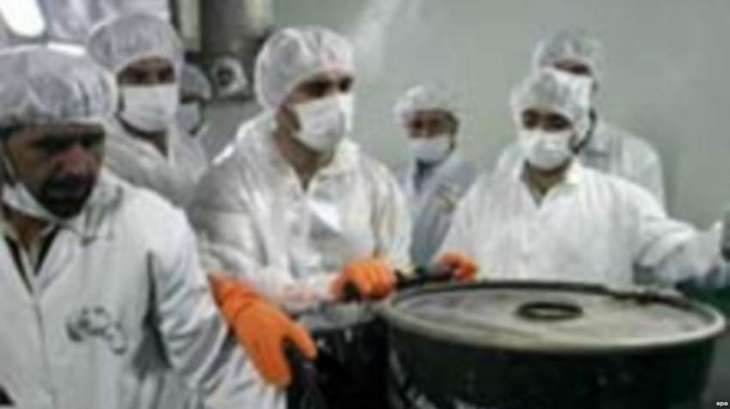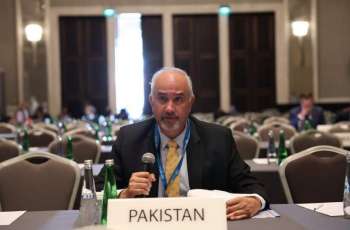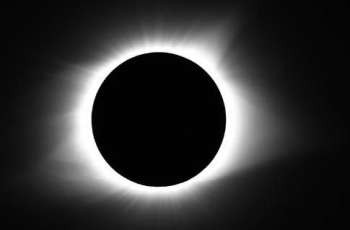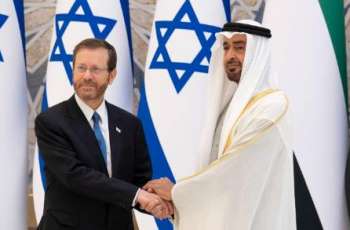The world marks on Wednesday the International Day for the Total Elimination of Nuclear Weapons, established by the United Nations General Assembly (UNGA) on December 5, 2013 to raise awareness about the threat posed by nuclear weapons to humanity.
MOSCOW (Pakistan Point News / Sputnik - 26th September, 2018) The world marks on Wednesday the International Day for the Total Elimination of Nuclear Weapons, established by the United Nations General Assembly (UNGA) on December 5, 2013 to raise awareness about the threat posed by nuclear weapons to humanity.
This day also seeks to explain the need for the total elimination of these weapons in order to mobilize international efforts to achieve the common goal of building a world free of nuclear weapons.
The total elimination of nuclear weapons is one of the United Nations' oldest goals. It was the subject of the first General Assembly resolution in 1946. This topic along with general and complete disarmament, have been included on the agenda of the General Assembly since 1959. It was the main topic of the review conferences had been held at the United Nations since 1975 by the states that are parties to the Treaty on the Non-Proliferation of Nuclear Weapons. It was identified as one of the priorities for the first special session of the General Assembly on disarmament in 1978 and had also been supported by each of the secretaries-general of the United Nations.
There are currently about 15,000 nuclear weapons in the world's arsenals. More than half the world's population lives in countries that either have such weapons or are members of nuclear alliances.
In December 2016, the UNGA decided to prepare a convention on the prohibition and total elimination of nuclear weapons. The relevant resolution was supported by 123 states, while nuclear powers, including Russia, and about 30 other countries, voted against. China was the only permanent member of the UN Security Council to abstain from voting. The resolution recommended that a conference be held to develop a "legally binding instrument to prohibit nuclear weapons, leading towards their total elimination."
On March 27, 2017, the UNGA launched intergovernmental negotiations on drafting a convention on the prohibition of nuclear weapons. But, almost 40 countries, including the United States, the United Kingdom, France, Russia and China, did not participate in the conference.
On July 7, 2017, the participants of the UN conference to negotiate a legally binding instrument to prohibit nuclear weapons agreed on the text of the final document.
The convention notes that most countries in the world no longer see "nuclear weapons as a legitimate instrument of war." The signatories of the convention also pledged not to develop, acquire or test nuclear weapons. In addition, the agreement requires states to provide adequate assistance to individuals affected by the use or testing of nuclear weapons.
On September 20, 2017, the document was opened to be signed.
The convention will enter into force 90 days after it has been ratified by at least 50 countries.
A total of 60 countries have so far signed the document, but only 15 of them have ratified it.
The Russian Foreign Ministry spoke against the signing of an agreement on a complete ban on nuclear weapons. According to Mikhail Ulyanov, the Russian permanent representative to international organizations in Vienna and former director of the Department for Nonproliferation and Arms Control at the Russian Foreign Ministry, ratifying the agreement does not meet Russia's national interests and could lead to a violation of the provisions of the Treaty on the Non-Proliferation of Nuclear Weapons (NPT), which came into force in 1970.
Russia is committed to achieving a world without nuclear weapons and is making a significant contribution to global efforts to reduce nuclear weapons. The implementation of the Intermediate-Range Nuclear Forces (INF) Treaty, signed in December 1987 between the Soviet Union and the United States on the elimination of their intermediate-range and shorter-range missiles, led to the destruction of over 1,800 ground-launched ballistic and cruise missiles with ranges of 500 to 5,500 kilometers (from 311 to 3,417 miles) and more than 800 launchers. More than 3,000 nuclear warheads have been deactivated with an aggregate capacity of over 500,000 kilotons.
Russia fully fulfilled its obligations under the 1991 Strategic Arms Reduction Treaty (START) and the 2002 Strategic Offensive Reductions Treaty (SORT). Russia reduced the number of deployed strategic warheads from 9,000 to 1,900, and also eliminated more than 1,600 intercontinental ballistic missile (ICBM) and submarine-launched ballistic missile (SLBM) launchers; over 3,100 ICBMs and SLBMs; about 50 strategic nuclear missile submarines; and about 70 heavy bombers.
The New START Treaty was signed in 2010 and entered into force on February 5, 2011. In accordance with the treaty, Russia and the United States agreed to reduce the total number of warheads by one-third, and the number of strategic delivery vehicles by more than half. Russia also limited the number of deployed and non-deployed inter-continental ballistic missile launchers and heavy bombers equipped for nuclear armaments to 800. Russia fulfilled its obligations to reduce strategic offensive arms by the treaty reference date, February 5, 2018.
Russia has also fourfold reduced its arsenal of non-strategic nuclear weapons and concentrated it on central storage bases within the nation's territory.




